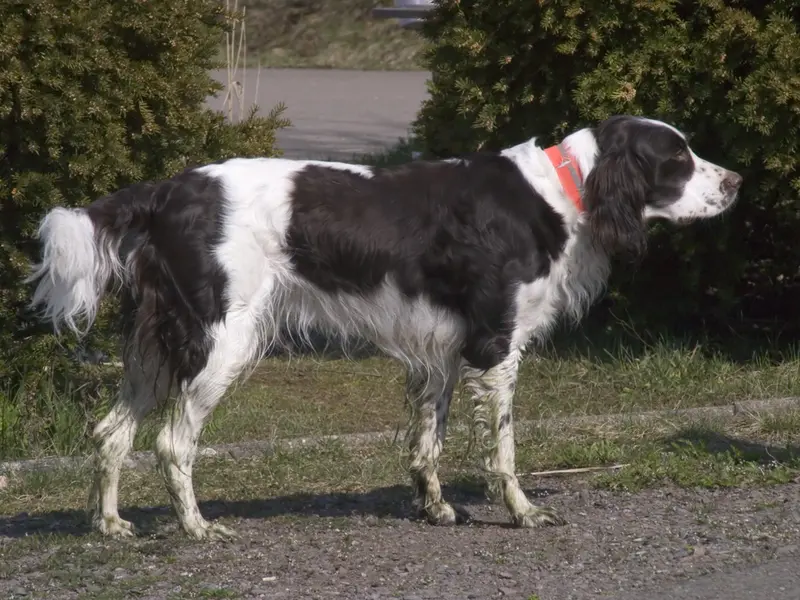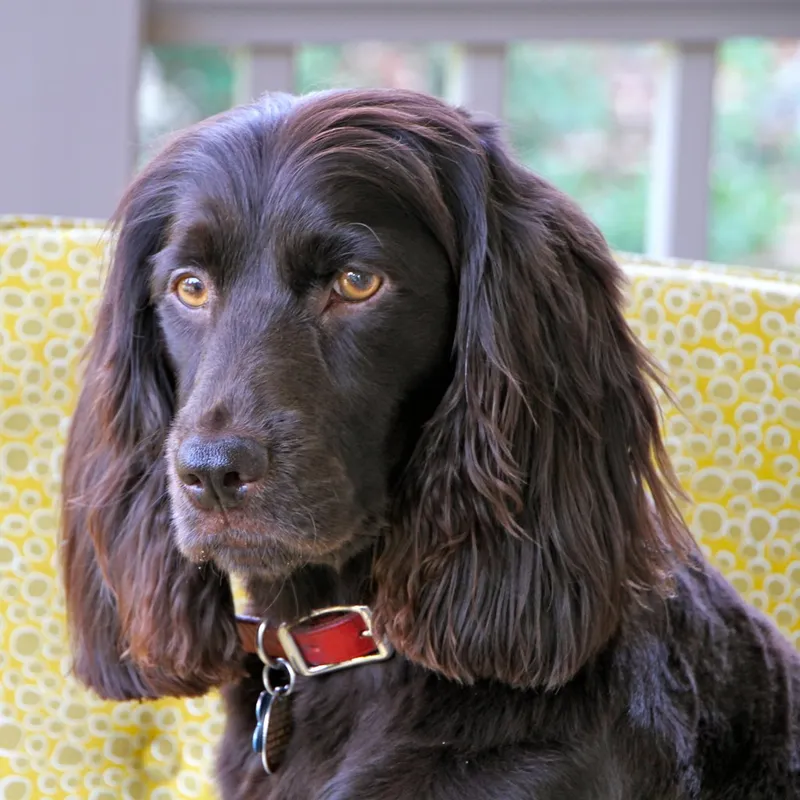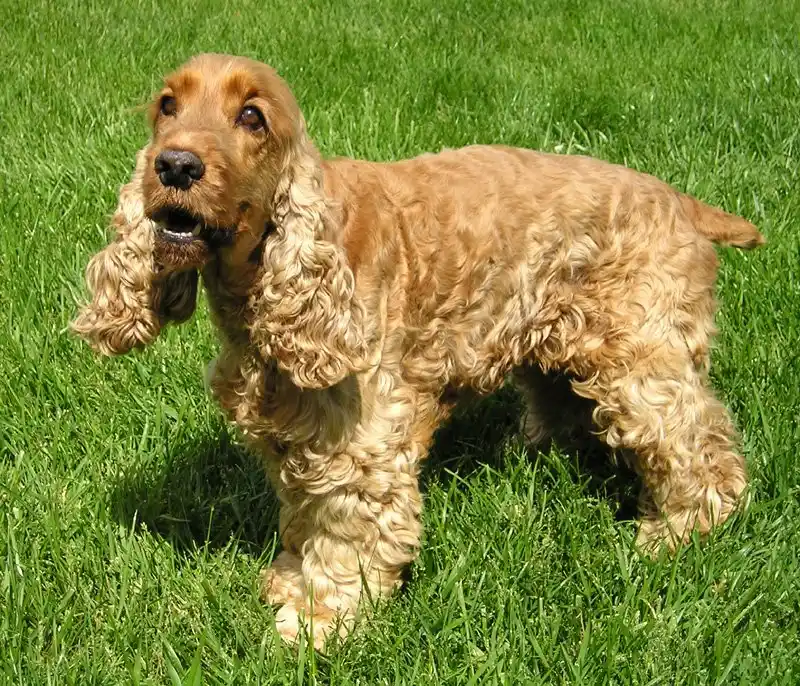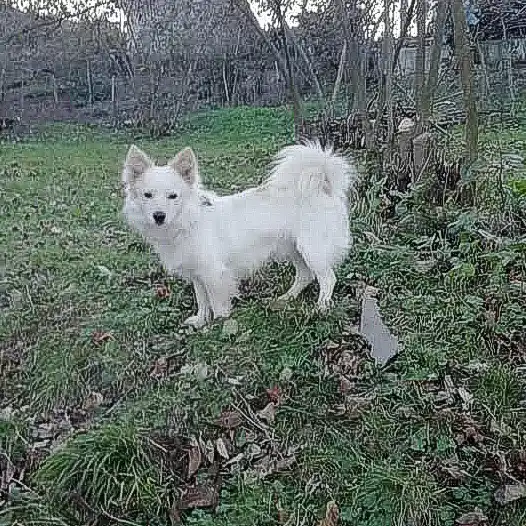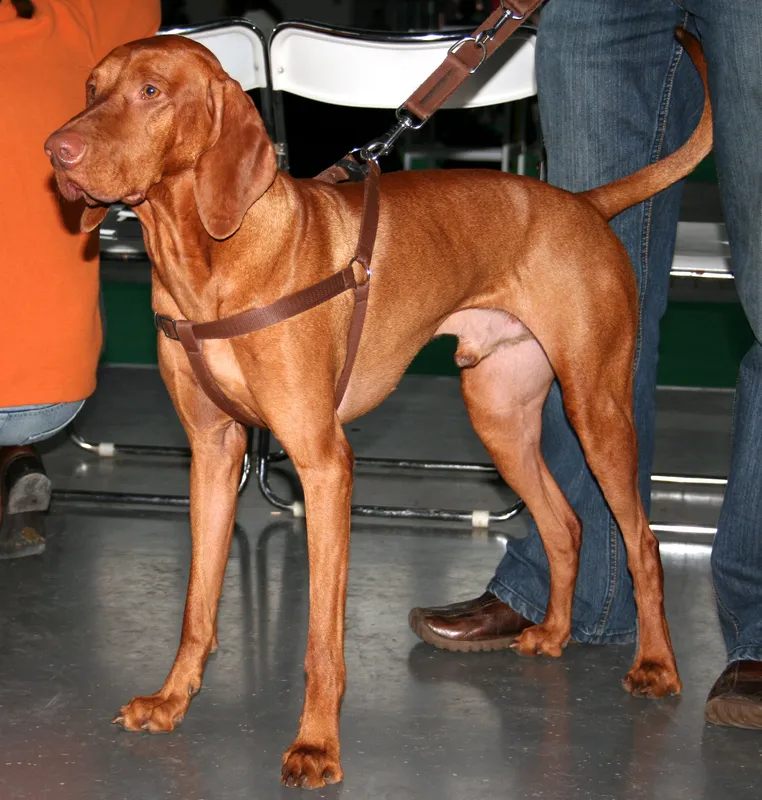Flat-coated Retriever
The Flat-coated Retriever is a lively, intelligent breed known for its friendly demeanor and versatility as a hunting companion. With a solid black or liver coat, they are affectionate family pets that thrive on exercise and mental challenges.
Overview
🐕Breed Overview
✨Key Traits
💡What Makes Flat-coated Retriever Special
Flat-coated Retrievers are known for their versatility and adaptability. They excel in hunting and retrieving tasks, showcasing their strong work ethic and determination.
Their friendly and sociable nature makes them great family pets, as they enjoy being part of family activities. They retain a youthful spirit throughout their lives, often displaying playful behaviors well into adulthood.
This breed's intelligence allows them to learn quickly, but they require mental stimulation to prevent boredom. Their affectionate disposition and loyalty to their families make them a cherished addition to any household.
The Flat-coated Retriever is a medium to large breed known for its exuberant personality and versatility as a hunting companion. Originating in England in the 19th century, this breed was developed from a mix of St. John's water dogs and various British setters and pointers, resulting in a dog that excels in both land and water retrieval.
5 inches and a weight of 60 to 70 pounds, they are strong yet elegant, characterized by their distinctive flat coat that comes in solid black or liver colors. Their friendly and outgoing temperament makes them a beloved family pet, often referred to as the 'Peter Pan' of dog breeds due to their playful nature that lasts into adulthood. Flat-coated Retrievers are known for their intelligence and eagerness to please, making them highly trainable.
They thrive on regular exercise and mental challenges, requiring at least 60 minutes of vigorous activity each day. Activities such as swimming, fetching, and agility training are ideal for keeping them engaged. Their affectionate nature and devotion to their families make them excellent companions for active households, particularly those with children.
Grooming needs are moderate, with occasional brushing required to maintain their coat's health and appearance. While they are generally healthy, potential owners should be aware of common health issues, including a higher risk of certain cancers. With a lifespan of around 10 years, providing proper care, regular veterinary check-ups, and a healthy diet can help ensure a long and happy life for these delightful dogs.
Whether as a hunting partner or a family companion, the Flat-coated Retriever's joyful spirit and unwavering loyalty make them a cherished addition to any home.
🎉Fun Facts
Flat-coated Retrievers have a unique, ever-wagging tail that reflects their cheerful disposition.
Known as the 'Peter Pan' of dog breeds due to their youthful spirit.
They are sometimes used as drug-sniffing dogs due to their excellent sense of smell.
Breed Characteristics
Family & Friends
Good Behavior
Get Up & Go
Household Harmony
Temperament & Personality
✨Key Traits
🐕Core Temperament
The Flat-coated Retriever possesses a friendly and outgoing temperament, making them an ideal family companion. They are known for their exuberance and playfulness, often displaying a youthful spirit throughout their lives.
This breed is affectionate and loyal, forming strong bonds with their families. They are generally good with children and other pets, showcasing their sociable nature.
While they can be protective, they are not aggressive and are more likely to greet strangers with enthusiasm. Their intelligence and eagerness to please make them responsive to training, although they may require mental stimulation to prevent boredom.
💫Personality Profile
The Flat-coated Retriever is characterized by its lively and affectionate nature. They are known for being outgoing and friendly, making them excellent companions for families and children.
Their playful demeanor often leads them to engage in fun activities, and they thrive on human interaction. Despite their exuberance, they are also sensitive and responsive to training, making them relatively easy to train with positive reinforcement methods.
Their intelligence and eagerness to please contribute to their adaptability in various situations, whether in the field or at home.
🔊Vocal Tendencies
Flat-coated Retrievers are generally moderate barkers. They may bark to alert their owners of strangers or unusual sounds, but they are not known for excessive barking.
Their vocalizations can include playful barks during playtime or when they are excited. While they can be assertive in their barking, they are typically friendly and welcoming, making them less likely to be aggressive.
Their vocal behavior is often a reflection of their outgoing personality, and they enjoy engaging with their families.
Affection & Social Traits
Energy & Activity
Communication Style
Care Requirements
🏃♂️Exercise Requirements
Daily Exercise
The Flat-coated Retriever is an active breed that requires a significant amount of exercise to maintain its physical and mental well-being. Ideally, they should receive at least 60 to 90 minutes of vigorous exercise each day.
This can include activities such as running, swimming, fetching, and participating in dog sports like agility and obedience training. Puppies may require shorter, more frequent play sessions to avoid overexertion, while senior dogs may benefit from gentler activities like leisurely walks or swimming.
Regular exercise not only helps manage their weight but also reduces the likelihood of behavioral issues stemming from pent-up energy. Insufficient exercise can lead to destructive behaviors, anxiety, and obesity, making it crucial for owners to provide ample opportunities for physical activity.
Preferred Activities
🏠Living & Adaptability
Space Requirements
Flat-coated Retrievers thrive in environments where they have ample space to run and play. A home with a large, securely fenced yard is ideal, as it allows them to explore and engage in physical activities safely.
While they can adapt to apartment living if given sufficient daily exercise, they may become restless in confined spaces. Owners living in smaller homes should ensure they can provide regular outdoor activities and mental stimulation to prevent boredom and anxiety.
The breed's size and energy level necessitate a living environment that accommodates their need for movement and interaction.
Climate Preference
🍲Feeding Guide
Schedule
Food Types
Portion Size
Special Nutritional Needs
Flat-coated Retrievers may benefit from a diet rich in protein and healthy fats to support their active lifestyle. Owners should be mindful of potential food sensitivities and consult with a veterinarian for specific dietary recommendations, especially for puppies and senior dogs.
✨Grooming Requirements
Grooming Overview
The grooming needs of the Flat-coated Retriever are moderate. Their flat, dense coat requires weekly brushing to remove loose hair and prevent matting, particularly around the ears and legs.
Occasional baths are recommended to keep the coat clean and healthy, especially after outdoor activities. Regular nail trimming and ear cleaning are also important to maintain overall hygiene.
While they do shed, their grooming requirements are manageable, making them suitable for families willing to invest a little time in coat care.
Care Schedule
Brush weekly; bathe as needed; trim nails every two weeks.
Health Profile
⚕️Health Care
Regular health care, including routine veterinary check-ups, vaccinations, and preventive treatments, is essential for maintaining the Flat-coated Retriever's health and longevity. Early detection of health issues through regular examinations can lead to better management and treatment options. Owners should also be proactive in monitoring their dog's health and behavior to catch any changes early on.
Health Issues Overview
⏳Average Lifespan
Genetic Factors
Genetics play a significant role in the Flat-coated Retriever's lifespan, with hereditary health issues such as certain cancers being more prevalent in the breed. Responsible breeding practices focusing on genetic diversity and health clearances can help mitigate these risks. Potential owners should seek breeders who conduct health tests for common conditions and prioritize the overall health of their breeding stock.
Living Conditions
The Flat-coated Retriever's lifespan can be influenced by various environmental factors, including housing conditions, climate, and social interactions. A stable, loving home environment with regular exercise and mental stimulation can promote longevity.
Exposure to extreme temperatures should be managed, as they can be sensitive to heat and cold. Regular social interaction with family members and other pets can also contribute to their overall happiness and well-being, positively impacting their lifespan.
🏥Common Health Issues
Malignant Histiocytosis
Warning Signs
🔬Diagnosis
Diagnosis typically involves blood tests, imaging, and biopsy.
💊Treatment
Treatment options may include surgery, chemotherapy, or palliative care.
📝Management Tips
Regular veterinary check-ups, awareness of symptoms, and early intervention are crucial.
Hip Dysplasia
Warning Signs
🔬Diagnosis
Diagnosed through X-rays and physical examinations.
💊Treatment
Surgical options or medication may be necessary.
📝Management Tips
Maintain a healthy weight, provide joint supplements, and engage in low-impact exercise.
Progressive Retinal Atrophy
Warning Signs
🔬Diagnosis
Diagnosed through eye examinations by a veterinary ophthalmologist.
💊Treatment
Currently, there is no cure; supportive care is recommended.
📝Management Tips
Regular eye check-ups and monitoring for changes in vision.
🛡️Preventive Care
🔬Hip Evaluation
This test assesses the dog's hip joints for dysplasia, which can lead to arthritis and mobility issues. Early detection allows for management strategies to be implemented.
📅 Recommended annually for adults; puppies should be screened before breeding.
🔬Eye Examination
This test evaluates the dog's eyes for hereditary conditions such as cataracts and retinal issues. Regular check-ups can help catch problems early.
📅 Every 1-2 years, or as recommended by a veterinarian.
🔬Genetic Health Screening
This test screens for common genetic disorders, including certain cancers prevalent in the breed. Understanding the genetic background can help in breeding decisions.
📅 Recommended for breeding dogs and their offspring.
Training
🧠Intelligence & Trainability
💪Work Drive
Flat-coated Retrievers have a strong work drive and thrive when given tasks to complete. They excel in activities that challenge their physical and mental abilities, such as hunting, retrieving, and participating in dog sports.
Engaging them in regular training sessions and providing opportunities for problem-solving, like puzzle toys or scent work, can help satisfy their need for mental stimulation. Without sufficient engagement, they may develop behavioral issues, so it's important for owners to provide a variety of activities to keep them fulfilled.
⚠️Training Considerations
Flat-coated Retrievers are intelligent and eager to please, but they can also be easily distracted and may exhibit stubbornness if not properly engaged. Common challenges include their tendency to become bored with repetitive training and their exuberance, which can lead to jumping or rough play.
To overcome these challenges, owners should employ positive reinforcement techniques, keep training sessions short and varied, and incorporate fun activities that stimulate both their minds and bodies. Socialization from an early age is crucial to help them develop good manners and reduce any potential behavioral issues.
📝Training Tips
Training a Flat-coated Retriever can be a rewarding experience due to their eagerness to learn and please their owners. Positive reinforcement methods, such as treats and praise, work best with this breed.
Consistency is key, and training should be approached in short, engaging sessions to maintain their interest. Incorporating play into training can help keep them motivated.
Early socialization with various people, pets, and environments is essential to ensure they grow into well-rounded adults. Owners should also focus on teaching basic commands and gradually introduce more complex tasks as the dog becomes more confident and skilled.
History & Heritage
📜Origin Story
The Flat-coated Retriever's origins can be traced back to the 1800s when fishermen in Newfoundland utilized retrieving dogs to assist in their work. These early dogs were known for their swimming abilities and retrieving skills, which were essential for catching fish and other objects from the water.
As these dogs made their way to England, they were crossed with various British breeds, including setters and pointers, to enhance their hunting capabilities. By the late 19th century, the Flat-coated Retriever was recognized for its unique characteristics and became a popular choice among gamekeepers and hunters.
Despite facing challenges in the mid-20th century, the breed has persevered and remains a cherished companion and working dog today.
⏳Development History
The Flat-coated Retriever's development began in the early 19th century, with its ancestry tracing back to the St. John's water dog and various British setters and pointers.
These early retrievers were bred for their ability to retrieve game from both land and water, leading to the establishment of the breed as a reliable hunting companion. The breed gained popularity in the late 1800s, but its numbers dwindled after World War II.
A resurgence in the 1960s, driven by dedicated breeders, helped restore the breed's population and reputation as a versatile working dog and beloved family pet.
🛡️Purpose & Historical Role
Originally bred for retrieving game from both land and water, the Flat-coated Retriever has served as a versatile hunting companion for generations. Their skills in flushing and retrieving have made them invaluable to hunters, while their friendly and outgoing nature has made them excellent family pets. Today, they continue to participate in various dog sports, including agility and obedience trials, showcasing their intelligence and eagerness to please.
🏺Cultural Significance
The Flat-coated Retriever has played a significant role in the history of hunting and retrieving in England. Originally bred to assist fishermen and gamekeepers, these dogs were valued for their versatility in both water and land retrieval.
Their friendly and outgoing nature has made them popular as family pets, and they are often referred to as the 'Peter Pan' of dog breeds due to their youthful demeanor that persists into old age. The breed has also contributed to the development of other retriever breeds, including the Golden Retriever, showcasing its importance in canine history.
Conservation Status
This breed is less common but has stable populations in certain regions.
